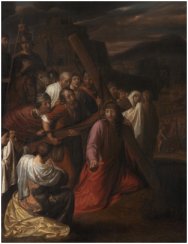Rembrandt’s Apprentice
Technical Art History - A New Area of Scientific Research
Technical art history is a new and exciting inter-disciplinary field. Its methodology, which combines art history with scientific research, is being increasingly used by world leading museums and organisations responsible for preserving the nation's heritage, to develop critical new insights into historical painting techniques and materials and to support conservation activities and authentication. For example, fully understanding the composite materials in paintings is instrumental for their preservation and informs key decision-making about conservation treatments. Accurately identifying composite materials also enables a correct interpretation of the art work, including its appearance, date painted, attribution to a specific artist or school, and thus, potentially, authentication.
The University of Glasgow's Technical Art History Group (TAH), in the School for Culture and Creative Arts (CCA), and Geoanalytical Electron Microscopy and Spectroscopy centre (GEMS), in the School of Geographical and Earth Sciences (GES), can combine their expertise to provide these specialised services to cultural heritage organisations, museums, art galleries, and auction houses.
Rembrandt's Apprentice: Samuel van Hoogstraeten
 TAH recently examined a work by the Dutch painter and writer Samuel van Hoogstraeten (1627-1678). Van Hoogstraeten, who was a pupil in Rembrandt's studio in Amsterdam from 1642 to 1646. TAH's investigation, which was aimed at finding material evidence to date this painting and possibly confirm the presence of the 'Master's touch', involved the detailed analysis of cross-sections of the paint layers.
TAH recently examined a work by the Dutch painter and writer Samuel van Hoogstraeten (1627-1678). Van Hoogstraeten, who was a pupil in Rembrandt's studio in Amsterdam from 1642 to 1646. TAH's investigation, which was aimed at finding material evidence to date this painting and possibly confirm the presence of the 'Master's touch', involved the detailed analysis of cross-sections of the paint layers.
GEMS's scanning electron microscope (SEM) with energy dispersive X-ray analysis (EDX) offered the means to identify the pigments in the paint and ground layers (i.e., preparation layers on the canvas).
Download the full Discovering Artists' Secrets: Rembrandt's Apprentice case study.

